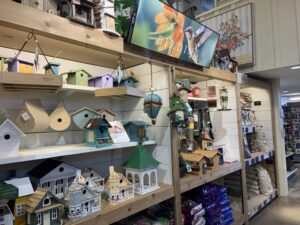
Pollinators and Plants: A Research Update
There is no question that horticulture is beneficial to bees and pollinators. After all, the best way to support bees is to plant healthy and bee-friendly plants. For generations, professional growers of trees, plants and flowers have been stewards of the environment and champions of sustainable practices. We know and grow the very things pollinators need to thrive: diverse and ample forage sources.
The AmericanHort foundation, The Horticultural Research Institute (HRI), has funded several research projects since 2015 to inform best practices and educate and empower horticulture professionals with stewardship practices.
Plant Cultivars
Two researchers recently conducted projects evaluating plant cultivars and their impact on pollinators. First, Harlan Patch, Ph.D., at Penn State University has developed a method to assess pollinators’ plant attractiveness.
Patch understood that to keep pace with the speed at which new cultivars are introduced to the market, a rapid method of measuring their attractiveness to pollinators is needed. Traditionally, this process is lengthy and time-consuming, requiring either collection and expert identification of pollinator species that visit each cultivar or observing and counting the number and types of pollinators that visit a plant. Because of the expertise and time required, pollinator attractiveness is often a characteristic not included in most cultivar breeding and evaluation protocols.
By using properly trained, non-expert observers (citizen scientists) and multiple, short-duration observations, Patch and his team developed a pollinator attractiveness evaluation method requiring considerably less time and expertise while delivering consistent and trustworthy results.
As pollinators and pollinator health become more important to the public, assessment tools such as this will become essential in providing information to allow consumers to select plant varieties that give the most significant benefits to pollinators.
From this project, Patch is developing an app that will eventually integrate features that go beyond simply scoring the pollinator attractiveness of cultivars, making this an adaptable tool for any user, anywhere in the U.S.
In another research project, Dan Potter, Ph.D., at the University of Kentucky investigated the hot-button issue of native cultivars, sometimes referred to as nativars. Nativars are vegetatively propagated native species selections with desirable traits, such as plant size, flower color, leaf color or bloom period. These traits usually make them more desirable in home and landscape settings. Still, these selected traits could potentially affect their value to pollinators as nectar or host plants.
Specifically, Potter evaluated if milkweed (Asclepias) nativars provide the same benefits to monarchs (Danaus plexippus) as wild-type milkweed species. His research found that in home and landscape settings, milkweed cultivars are similarly capable of attracting and supporting monarchs and native bees when compared to wild-type species.
Potter does note that the use of nativars would be inappropriate in natural areas or in restoration projects, where the importance of maintaining species genetic variability is critical. He also encourages the planting of multiple milkweed species, wild types, or nativars, as well as other plant genera to support pollinators throughout the year.
Consumer Confidence
One of the most recent research projects was led by Andony Melathopoulos, Ph.D., at Oregon State University. Melathopoulos wanted to better understand consumer confidence in green industry pollinator protection practices. To find out, Melathopoulos undertook an extensive survey of consumers in a variety of retail settings.
Preliminary results of the survey revealed that consumers were relatively confident that plants advertised as attractive to pollinators were, in fact, attractive to pollinators.
Participants also indicated a willingness to pay more for plants grown without pesticides harmful to pollinators. It is important to note there was a significant decrease in this premium price if the pesticide toxicity had dissipated by the time of purchase.
Survey participants also indicated that an endorsement was important — those plants indicating a “multi-agency initiative for protecting bees” was the most trusted message concerning the selection of plants attractive to pollinators.
Conclusion
What can the industry learn from this project? Best practices do influence consumer confidence, but consumers cannot know how a plant is grown, nor its beneficial attributes, unless they are provided that information.
Using plant tags and labels to communicate pollinator attractiveness, growing practices and third-party endorsements has implications for consumer purchasing behavior.
With the COVID-era increase in plant enthusiasts, the green industry is experiencing an influx of savvier-than-ever consumers, especially when it comes to pollinator health. Implementing science-based best practices for pollinator health, understanding pollinator interaction with plants and knowing what information resonates best with consumers can help horticultural businesses build trustworthy relationships and protect pollinators. To learn more about HRI and its funded research, visit www.hriresearch.org.


















 Videos
Videos





